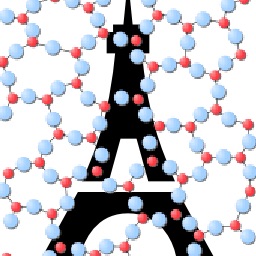Topological Constraints, Rigidity Transitions, and Anomalies in Molecular Networks
In this chapter, we present the first connection between realistic atomic scale simulations and topological constraint theory which has been introduced in the context of rigidity transitions of network glasses. Such rigid constraints can be computed rather simply by changing composition at low temperature but their estimates as a function of temperature or pressure remains challenging. We introduce and describe a method based on the calculation of standard deviations of relevant neighbor or partial bond-angle distributions which allows to estimate with confidence atomic stretching and bending topological constraints. The counting is illustrated from several archetypal liquids and glasses, including oxides and chalcogenides (SiO2, GexSe1−x ,…). These results permit connecting the role of mechanical constraints in disordered systems to elucidating some of its most intruiging features (adaptation), with calculated anomalies in structural and dynamic properties.
